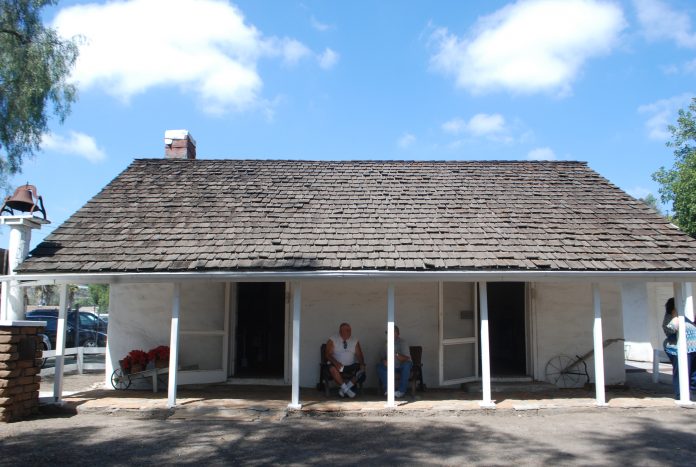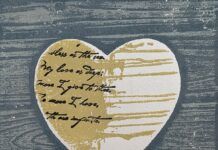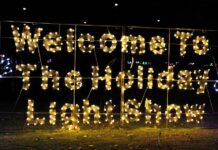Hidden away in Spring Valley there is a rare gem called the Bancroft Ranch House. This ranch house is made of adobe, which keeps the house very cool. Originally, it was built with two rooms and later adding a back room and a room on the side that had the restroom and an archive room. In 1964, the Bancroft Ranch House became a registered National Historic Landmark. Through the work of Hubert Howe Bancroft the famous historian the adobe house was kept from 1885 until the death of Bancroft in 1918.
Hidden away in Spring Valley there is a rare gem called the Bancroft Ranch House. This ranch house is made of adobe, which keeps the house very cool. Originally, it was built with two rooms and later adding a back room and a room on the side that had the restroom and an archive room. In 1964, the Bancroft Ranch House became a registered National Historic Landmark. Through the work of Hubert Howe Bancroft the famous historian the adobe house was kept from 1885 until the death of Bancroft in 1918.
Bancroft, a historian himself, wrote 39 volumes covering Alaska, western Canada, Central America, Mexico, and parts of the U.S. He published these volumes in San Francisco between 1882 and 1890. In May of 1863 Augustus S. Ensworth built the 18 by 32 ft. two-room adobe ranch house. The house was sold to Rufus King Porter of San Diego for $400. Porter, the founder of the Scientific American magazine wrote columns that appeared in San Diego and San Francisco. Porter’s daughter urged her father to find a name for where they lived and in 1866 he named the area Spring Valley.
In October of 1885 Bancroft was looking for a house to retire and purchased Porter’s property for $8,000. By 1910, a Helix farm was one of the largest olive ranches in Southern California. Bancroft Ranch House is an archeologist site. The natural spring that resides near it was once home to the Kumeyaay, also called Tipai, from the southern dialect over 2,000 years ago. Spring Valley’s spring was ideal because there was a fresh water source, plants to make food and animals to hunt.
In October 1775, the Spanish padres baptized some of the Kumeyaay from the village. The location was named El Aguaje de San Jorge. By the 1930s the Kumeyaay were removed from their home and relocated. The Bancroft Ranch House used to have schools come on field trips and college classes come to dig up bones and artifacts from the Kumeyaay. Some of the many things found were arrowheads dating back to 700 AD.
“Soapstone was a common thing found, the Kumeyaay would use this stone to head up food and due to its crystal structure it is likely to explode when heated and cooled over and over,” said President Robert Case of the Spring Valley Historical Society.
Kumeyaay traded things with other tribes like seashells and volcanic glass for a marriage partner or for the right of young teenagers, boys and girls, a rite of passage event. At the Bancroft site there are still plants native to the Kumeyaay times.
“With the spring still seeping till this day, the Bancroft Ranch House is the best kept secret,” said Case
Some of the native plants are Olney’s bulrush, laurel sumac, cattail that is not doing so well this year. Another is Mesa bushmallow that is medicinal and elderberry that can be used to make a good tea. The Spring Valley Historical Society helps promote news on the Bancroft Ranch House and has around 130 members. They are always looking for more people to get involved in preserving the Bancroft Ranch House for the next generation. Caretaker Jim Van Meter lives right outside the gate of the historical home, with his roster alarm clock and trusty dog Petey who has his own column called “Petey’s Post” to attract more reader—especially the young audience.















Way cool! Some extremely vald
Way cool! Some extremely vald points! I appreciate you writing this write-up andd the rest
of the website is also really good.
I have read so many content
I have read so many content regarding the blogger lovers except this article is really a pleasant paragraph, keep it up.